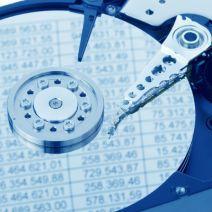Why You Can?t Afford to Ignore a Data Backup and Disaster Recovery Solution
 Data backup and disaster recovery are critical to the success of the modern business, but so many organizations still don?t see the importance of maintaining copies of their data infrastructure, or simply don?t think that they will fall victim to a data loss incident. Unfortunately, in this case, we have to insist that you consider data backup and disaster recovery; it?s not a matter of if you lose your data, but when.
Data backup and disaster recovery are critical to the success of the modern business, but so many organizations still don?t see the importance of maintaining copies of their data infrastructure, or simply don?t think that they will fall victim to a data loss incident. Unfortunately, in this case, we have to insist that you consider data backup and disaster recovery; it?s not a matter of if you lose your data, but when.
The reasoning is simple; there are situations that, like it or not, are beyond your control. You alone can?t stop your office from being flooded by a freak rainstorm. You can?t always prevent a sudden and unexpected hardware failure from bringing down mission-critical systems. You can rebuild your office after an earthquake, but the data that?s lost from the catastrophe can?t be recovered without the help of a data backup system. Plus, user error is a leading cause of data loss, but no matter how many times you explain best practices, someone is bound to make a mistake sooner or later. So, what can you do to keep your data safe?
The obvious answer is data backup and disaster recovery, but it?s not as simple as that. Some traditional backup solutions aren?t as effective as businesses would like them to be. One of the most common data backup tactics is tape backup, which stores your organization?s data on magnetic tape reels that are deployed in a time of need. While this method of data backup and disaster recovery was once the standard, it?s no longer the most efficient way of storing and recovering your critical data assets.
In short, tape backup has the shortcomings of being both user-intensive and time-consuming; two ill-suited traits for a business that needs to think on its feet in the event of a disaster. Furthermore, tape backups are resource-heavy and often must be performed after-hours, and if someone forgets to set the tape, you could lose out on a whole day?s worth of data. If you want to ensure the continued survival of your data, look for the following traits in a data backup and disaster recovery solution:
- Frequent backups: Unlike tape backups, which are typically performed once at the end of the workday, you want a solution that lets you take backups as often as every 15 minutes. This helps to minimize the amount of data lost due to unexpected technical hiccups.
- Off-site backup storage: If you store your data backups in-house or on your company network, you?ll likely lose them, along with all of your other data, if an event were to cause its destruction. Therefore, you want to store your data in a secure, off-site location, and in the cloud for anywhere access.
- A fast recovery time: You don?t want to be waiting around while waiting for your data to be redeployed to your entire infrastructure. With BDR, you can be back in action almost instantaneously. The BDR device acts as a server while you work towards replacing it.
If your business wants to fully leverage a modern data backup solution, you should invest in a Backup and Disaster Recovery (BDR) solution from White Mountain IT Services. Our solution provides you the dynamic and reliable data backup and recovery services you need in order to ensure the survival of your business?s infrastructure. Not only can you take multiple backups of your business?s data throughout the day, but you can also recover your data within a moment?s notice, all by taking advantage of the cloud.
Is your business still using antiquated data backup solutions? If so, call us today at (603) 889-0800. We?d be happy to show you how much easier it can be to protect your data using a BDR solution.


